What Goes Round,
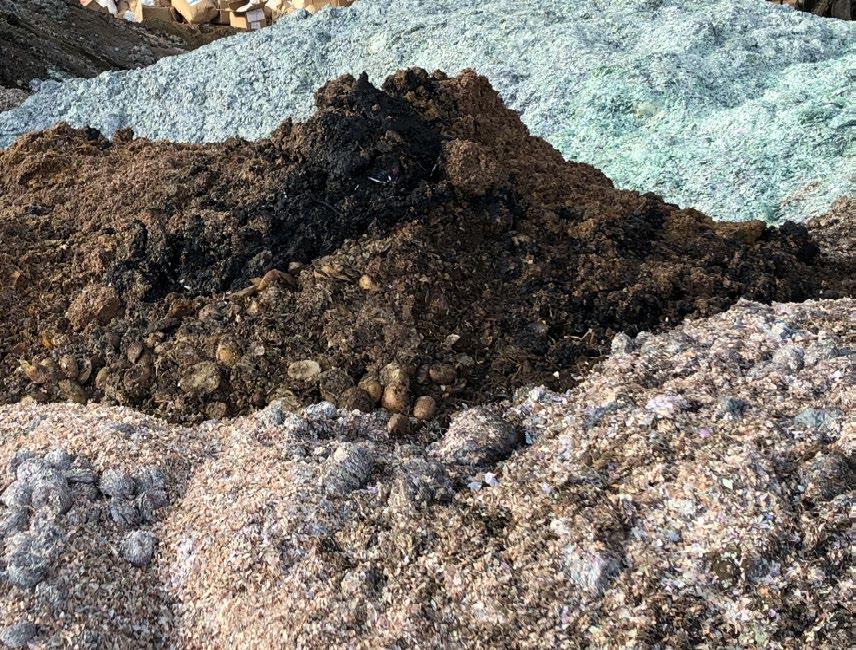

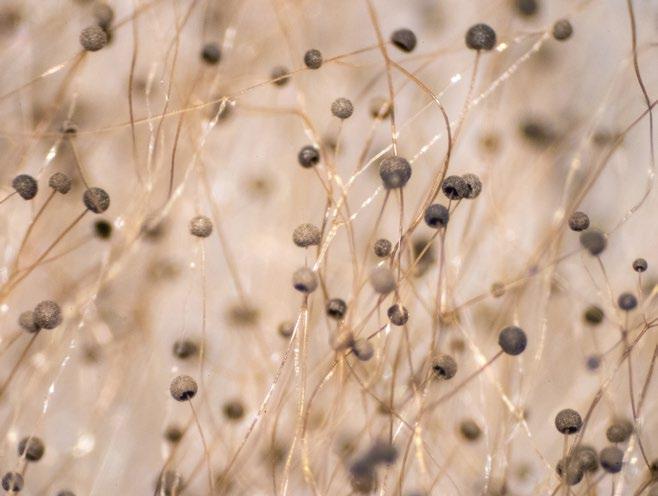




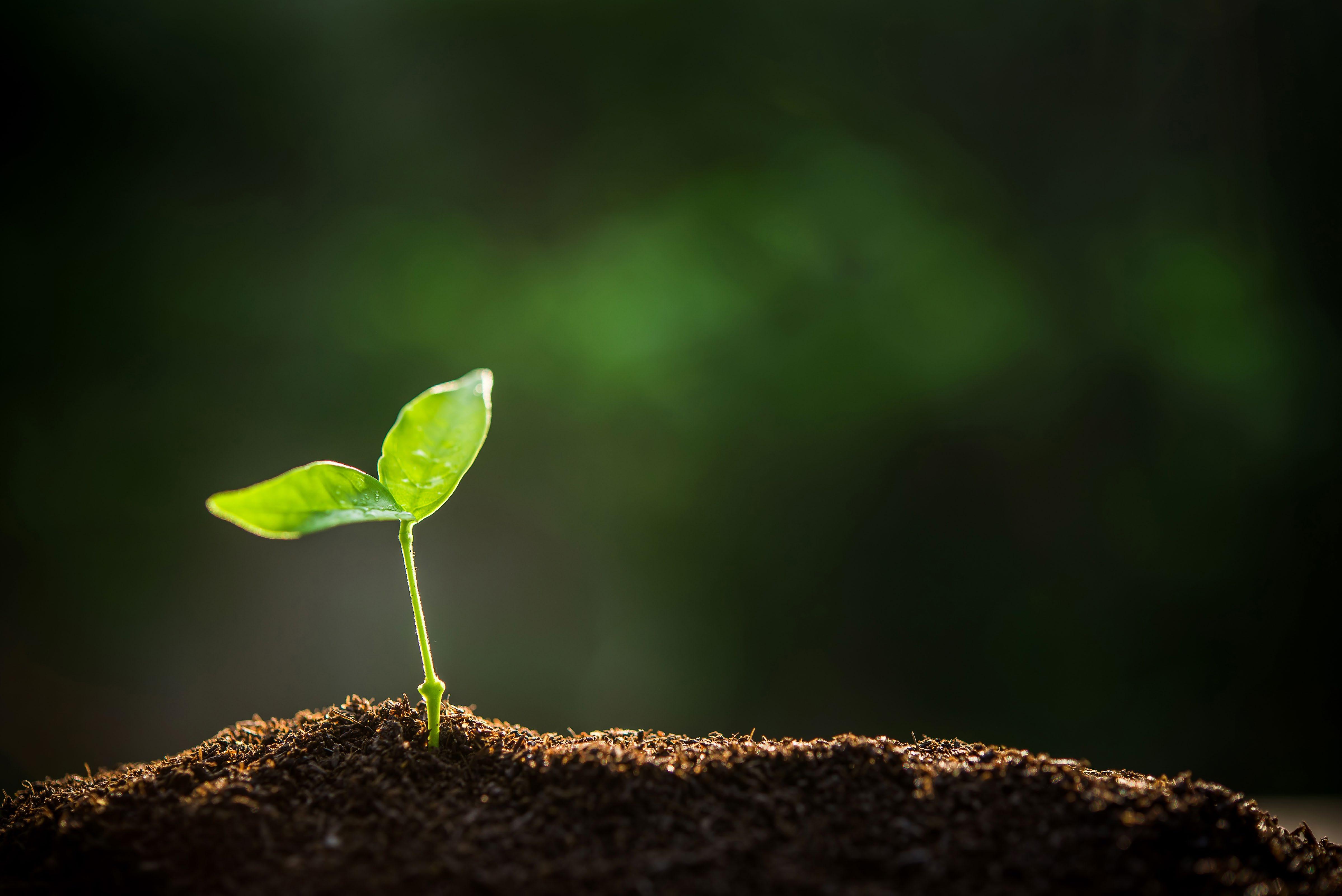
Comes
A Guide to Repurposing Unfit Shredded Paper Banknotes
Round





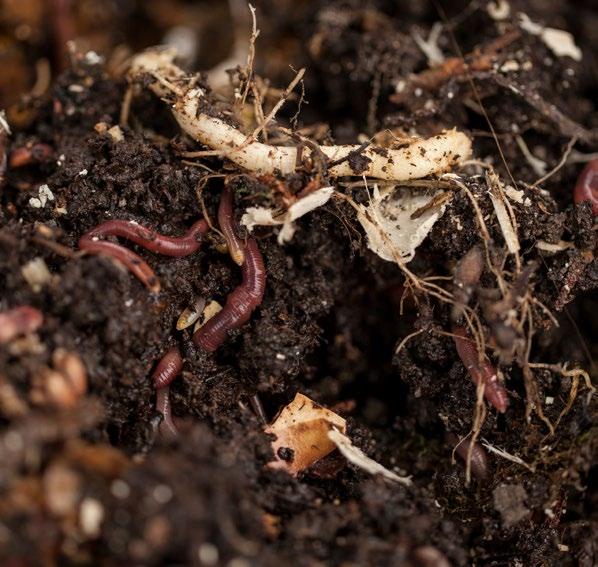

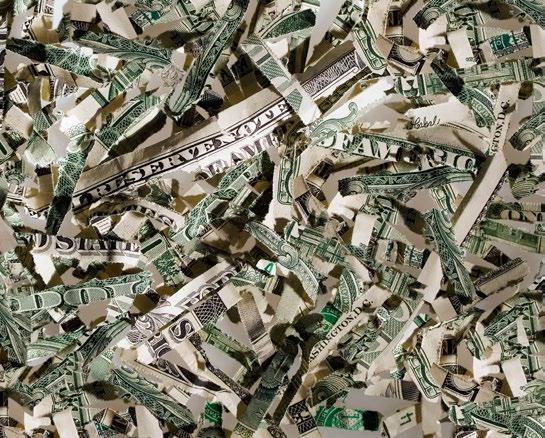
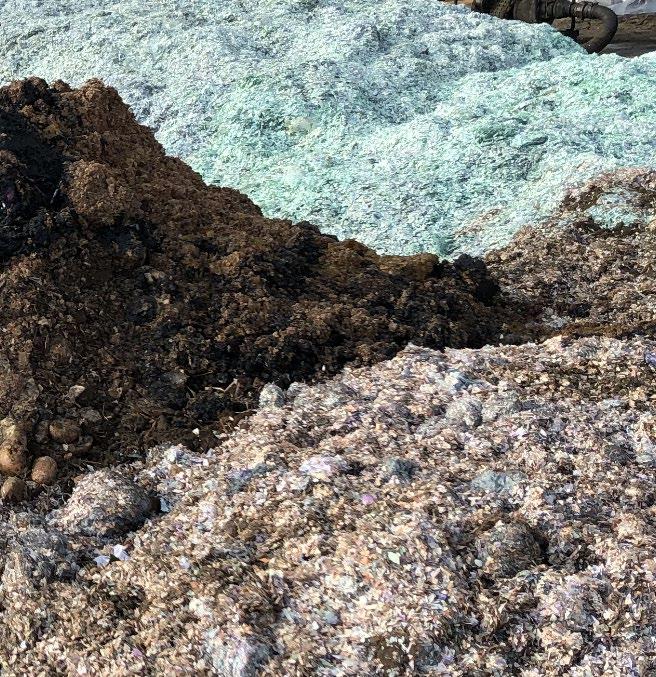

Contents 1. Introduction 3 2. Executive summary 4 2.1. General 4 2.2. Specific 4 3. Science 5 3.1. Definition of unfit banknote waste 5 3.2. Landfill 5 3.3. Uncontrolled burning 6 3.4. Waste to energy by incineration 6 3.5. Incineration of waste for cement production 6 3.6. Incineration of contaminated waste 7 Gasification and pyrolysis 7 Cotton waste pyrolysis research project 7 3.7. Composting 8 Aerobic composting 8 3.8. Approaches to composting 8 Aerated, or turned, composting 8 Aerated static pile composting 8 In-vessel composting 8 Required characteristics for composting 9 Anaerobic digestion 10 3.9. Technical material: the waste creates new materials 11 Using banknotes to make paper (Egypt) 11 Steam autoclaving 11 3.10. Other 12 Asphalt 12 Brick material 12 Reinforcement for Portland cement concrete 12 4. Who is doing what 13 4.1. Survey results 13 General sustainability 13 Disposal of shredded unfit cotton banknote 13 Survey results for the use of banknote waste other than burning 13 Regional differences 13 4.2. Case studies 14 European Central Bank 14 US Federal Reserve: FedCash® Services 15 Colombia: BioBanknote® 15 BioBanknote Mulch 16 Pakistan 17 Burning 17 Composting 17 5. Where to start 18 5.1. What needs to be understood 18 6. ANNEX 19 6.1. Colombia: BioBanknote 19 Stages of the composting process for banknotes 19 6.2. Infrastructure and other material requirements for composting banknote waste 20 Banknote composting and the environment 20 6.3. Hughes Energy/Landqart 21 Steam Autoclaving 21 Next steps 21 Pakistan 22
1. Introduction

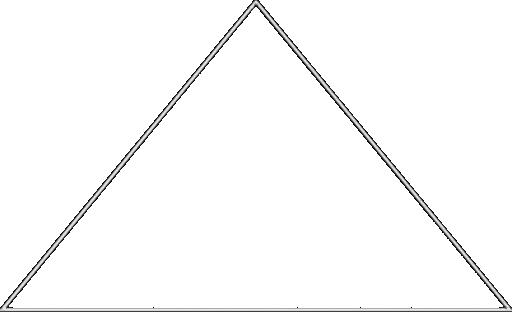
When a banknote is no longer fit for use, central banks withdraw it from circulation. These banknotes are then shredded and must be disposed of. Over 90% of banknotes today are made from a cotton paper substrate. There are, very roughly, 600 billion banknotes in circulation around the world.
If low denomination banknote have an average note life of a few years, considerable numbers of notes must be destroyed and disposed of each year. The rule of thumb is that a million banknotes weigh a tonne, which also gives a sense of the scale of what must be disposed of.
The destruction of banknotes at the end of their life is the responsibility of a central bank and it is one of the most visible environmental activities that they have. The sight or knowledge of banknote waste being put into landfill or burnt is a highly visible reminder of the environmental impact of banknotes. A public campaign against the use of banknotes based on their environmental impact and using images of banknote waste, like the one against the use of non-recyclable or reusable food and fast-food containers or packaging, could have a detrimental impact on the reputation of central banks and the use of banknotes.
This paper seeks to explain the options that central banks have for disposing of banknotes well, following the hierarchy of options shown here.
The last section of this report, ‘Where to start’, is intended as a guide if central banks wish to dispose of their banknotes differently from how they do it today.
We recognise that there is no “one size fits all” solution, because for every country a different solution might be the right choice to be more sustainable. The right solution may not be only recycling, only composting or only waste to energy because many factors are involved, eg. decentralized distribution of shreds, volume of material, industrial infrastructure etc., and these will lead to the appropriate decision for each central bank to choose their individual way to sustainability.
Hierarchy of disposal options
Note: Repurposing or recycling –technical material: the waste is used to create new material.
Repurposing
or recycling (see note left) Composting and anaerobic digestion Waste to energy by incineration
Burning Landfill and dumping
3 1
2. Executive summary
A survey of central banks backed up by a large number of conversations resulted in some general and specific finds.
2.1. General
■ Central bank interest in environmental sustainability is increasing.
■ Landfill and waste to energy by incineration are the two most common methods of disposing of unfit cotton banknotes around the world.
■ Few central banks have a detailed understanding of what happens to its waste.
■ There is considerable interest in finding alternatives to landfill.
2.2. Specific
■ The disposal of unfit banknotes through waste to energy by incineration schemes using controlled waste incineration plants equipped with flue gas treatment systems that protect the environment against the pollutants generated during combustion of solid waste, is a practical and useful approach to generating heat and energy.
■ There is a rich diversity of end-uses for banknote waste beyond landfill, burning and waste to energy by incineration already being pursued by central banks.
■ Although waste to energy by incineration is a useful approach, it is possible for banknote waste to contribute even more by adding value to other products.
■ It may be possible to sell banknote waste so that it is not a cost-centre for central banks.
As part of this study desk research was carried out firstly into how waste generally is treated and then specifically into cotton-based waste use, much of it led by work being done by central banks such as those of Egypt, Pakistan and Turkey, the US and the Bank of England. The scientific basis for alternative cotton waste uses has been established and there are practical central bank examples that can be followed.
Alternative value-adding options to landfill and burning do not automatically require high levels of capital infrastructure, for example composting, use in asphalt and brick making and even providing cotton fibre suitable for use in non-banknote paper making.
This report suggests how a central bank might approach finding alternatives to landfill or uncontrolled burning, and to consider ways to move up the hierarchy of disposal options. It will require some fact finding and research with local partners but, irrespective of the volume of notes to be disposed of, it is realistic to expect that alternatives are possible.

4 2
3. Science
3.1. Definition of unfit banknote waste
Several life cycle assessments provide detailed analysis of the composition of cotton-based banknotes. In simple terms banknotes consist primarily of cotton, the make up of their inks and small quantities of plastic either from security fibres, threads or foils. A number of research papers reported on here found that the inks and plastic elements could be safely managed so that they do not pollute the atmosphere, land or water.
An important characteristic of cotton-based banknotes is that they have a high calorific value, around 1.6 x 104 KJ/ kg. This means that they are useful in aerobic or anaerobic composting and burning, whether generating energy or as an additive fuel to balance the poor combustion values of other kinds of waste. Hence the presentation below of options where briquettes are used as additional fuel in industrial furnaces.
3.2. Landfill
Although there are categories of waste where landfill is the only practical solution, this applies to very few. Whether due to the lack of infrastructure, political will or a market for waste, landfill remains widely used as a simple and quick option for waste disposal. Valuable natural resources are, therefore, dumped and the disposal of mixed waste in this way comes at an environmental cost and with risks. Banknote waste has useful properties and sending it to landfill misses the opportunity to take advantage of them.
Landfill creates emissions such as methane as organic matter such as food scraps and garden waste decompose. Given that methane is 84 times more effective at absorbing the sun’s heat than carbon dioxide, this matters1. Landfill also produces carbon dioxide, water vapour and trace amounts of oxygen, nitrogen, hydrogen and non-methane organic compounds.
Landfill sites need to be lined with clay or plastics to stop leachate, a liquid that can contaminate water sources. Inevitably, the linings degrade over time and leaks happen. Leachate can contain high levels of ammonia which will nitrify to produce nitrates. This then causes a lack of oxygen due to increased growth of plant life in nearby water sources, eutrophication. The lack of oxygen means animals cannot survive.
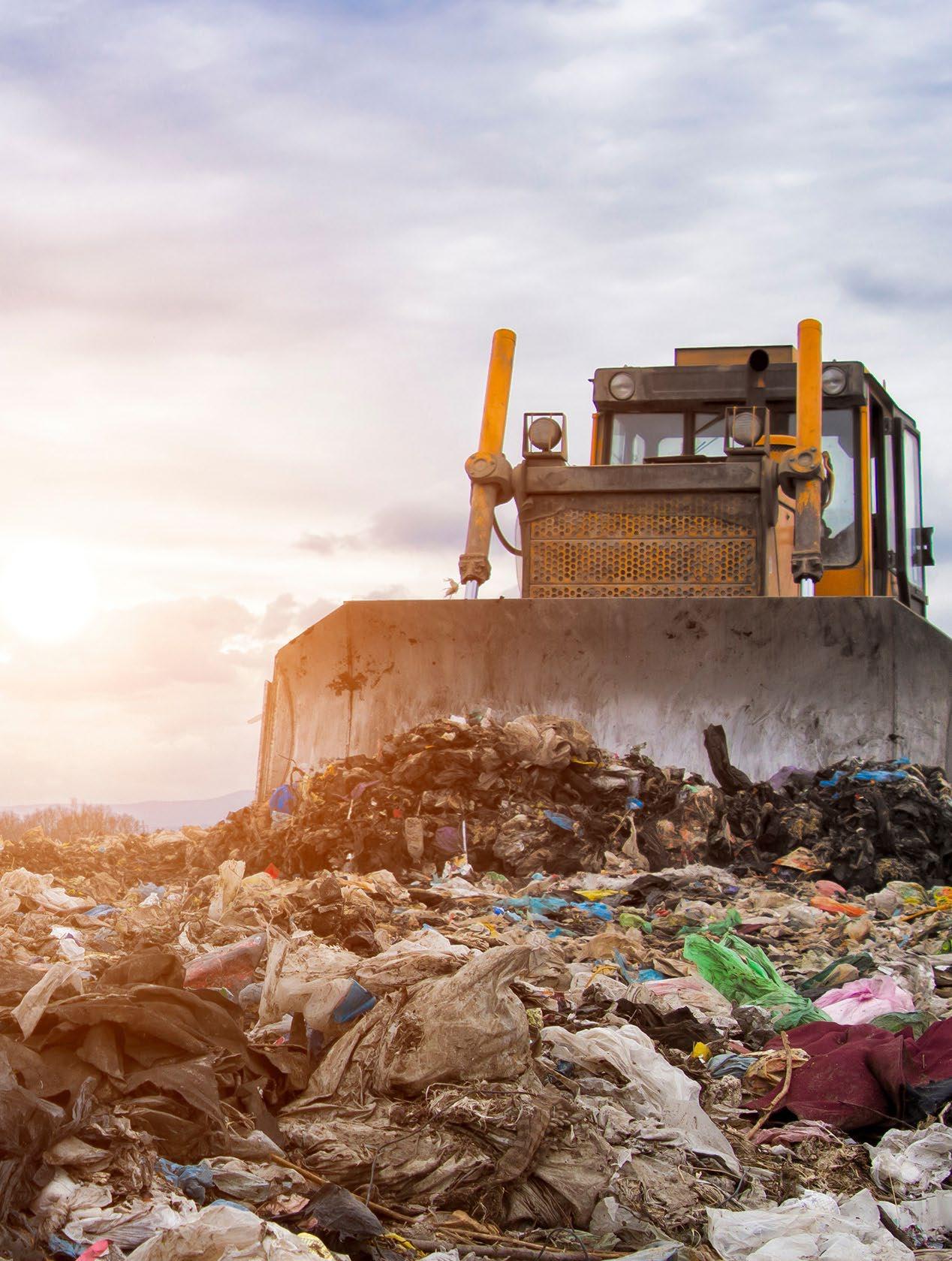
5 3
1 www. Colorado.edu. ‘The hidden damage of landfills. April 15, 2021. Kayla Vasarhelyi.
3.3. Uncontrolled burning
Whether due to a lack of infrastructure or other reasons, some banknote waste is burnt, but not using incinerators. Often additional fuel, such as oil, is added to ensure a hot enough burn which increases the environmental impact. This approach, while relatively quick and cheap, releases CO2, other gases and particulates directly into the environment without any controls. It can also lead to contamination of ground water.
3.4. Waste to
energy by incineration
Combustible waste that is not suitable for recycling can be sent for thermal treatment in waste incineration plants or waste wood furnaces2. The heat released can be used to heat buildings or to generate electricity.
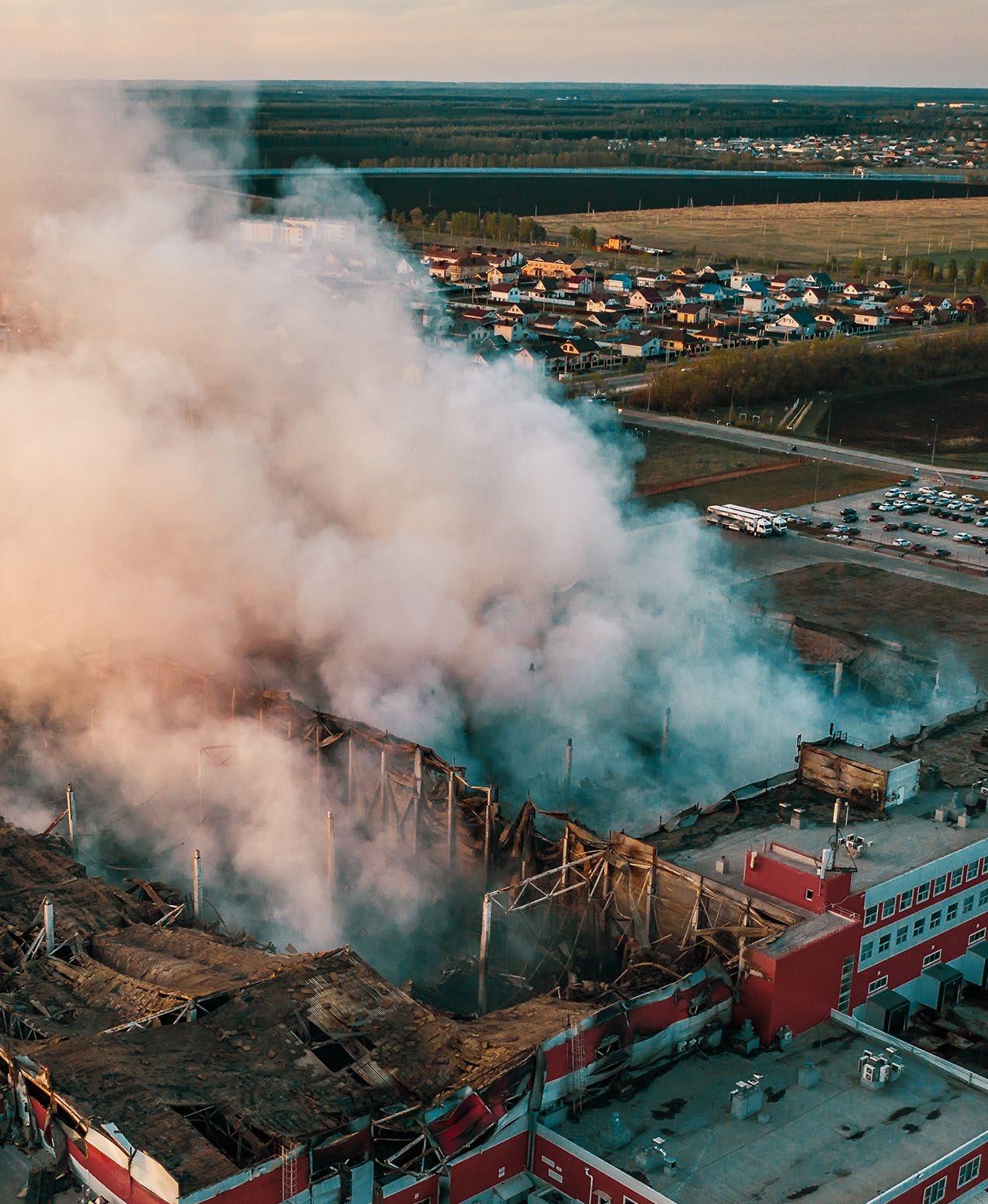
It is usual for unfit banknotes to be shredded and for those shreds to be compacted into briquettes. This reduces the volume of waste, reducing the space needed to store or transport it. To burn these briquettes, incinerators are needed that will burn at high temperatures. Industrial grade ovens are required and not all countries have these.
These incinerators need flue gas treatment systems appropriate to handle the resulting gas emissions, removing particulates from gases that are emitted in the burning process. Not every country has these furnaces.
3.5.
Incineration of waste for
cement production
Waste that has a high calorific value and a low level of pollutants, such as shredded banknotes, can be used in furnaces in industrial plants such as cement plants. It must be crushed before use and organised so that there is a constant calorific value when burnt.
Cement production requires cement, lime and other mineral raw materials to be heated to 1,450 degrees centigrade to produce what is known as ‘clinker’. 135kg of coal or 86kg of crude oil have to be burnt to produce one tonne of clinker3. Switzerland’s six cement works have generated 40-50% of their energy requirements from replacement fuels, reducing overall CO2 emissions.
2 One country surveyed for this report provides briquettes to a local crematorium as fuel.
3 www.bafu.admin.ch. Federal Office of the Environment (FOEN), Switzerland.
6 3
3.6. Incineration of contaminated waste
If waste is contaminated with organic pollutants, then it should go to hazardous waste incineration plants.
Gasification and pyrolysis
The origin of this process was to burn wood and coal, but it has been adapted as a way of disposing of general waste. Waste material is exposed to high temperatures with little or no oxygen. When organic matter is heated, gases, oils and char are released. Plastic is pyrolyzed into a gas or oil creating a synthetic fuel. This is then burned in an oxygen-rich environment to generate energy.
Inevitably, when mixed waste is burnt, polluting emissions are created. It is claimed that gasification and pyrolysis are less polluting than mass-burn incineration, but it still releases high levels of dioxin, mercury and other toxic pollutants4 .
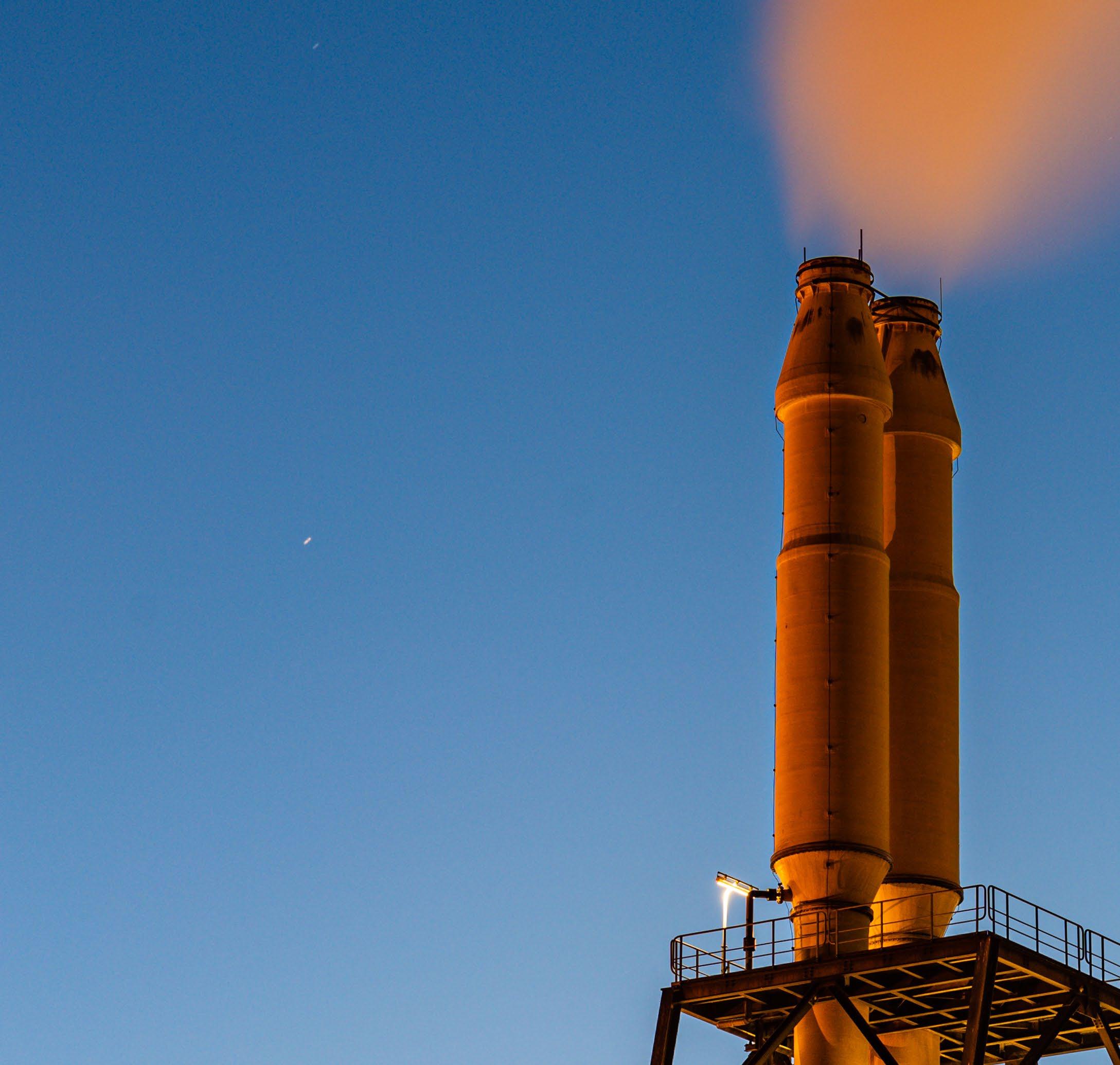
In addition to the cost of building, equipping and operating the gasification and pyrolysis sites, they also require significant energy to operate. There are questions about the environmental benefits, with critics presenting evidence that they use between five and 87 times more energy to create the synthetic fuel than can then be burnt5 .
Cotton waste pyrolysis research project
An interesting research paper carried out pyrolysis of combed cotton waste6. Although not shredded unfit banknotes, it provides information useful for considering the environmental impact of disposing of banknote waste using this process. It found the highest liquid product efficiency occurred at 550 degrees centigrade using Na2CO3 as the catalyst. The liquid efficiency was 33.4%. The report says that pyrolysis generates less air emissions and non-leachable residues compared with conventional incineration.
The properties of the product were analysed using high performance liquid chromatography. Furans (28%), ketones (25%), aldehydes (14%), less carboxylic acids (7%) and hydrocarbons (7%) were detected. It found that pyrolysis may be a useful way of waste management for energy and material recovery. Pyrolysis converts raw material to reactive products, three types of intermediate products that can be collected as fuel feedstocks.
The calorific value of the waste used in the paper’s experiments had an average value of 24.18 MJ/kg, a valuer higher than wood, lignite, food and leather wastes. The calorific value of the liquid product obtained because of the pyrolysis was 11.49 MJ/kg, the solid product, char, was 31.73 MJ/kg, higher than that of coal, and the ash content remains were 2.57%.
The paper found that the pyrolysis of one tonne of combed cotton waste cost approximately $1,225. The LPG used to burn the material accounted for 98% of this cost. 253 litres of liquid product can be produced from one tonne of combed cotton waste with a calorific value of 11.49 MJ/kg. This makes it suitable as a low-grade fuel without further refining. Alternatively, a better use might be the production of chemicals.
The solid product can be used as fuel or as a raw material or additive material for a number of industrial activities, eg. medical, food, chemical industries, and for manufacturing products such as black packages, cables and house pipes. It can be used as dyestuff material in rubbers and to produce activated carbon, a support material for adsorbent and metal catalysts.
4 www.clf.org
5 www.sciencedirect.com. Resources, Conservation and Recycling. Volume 141, February 2019, Pages 233 – 242. 6 www.researchgate.net. The Disposal of combed cotton wates by Pyrolysis. March 2014. Internal Journal of Green Energy. Sibel Barisci. Mert Öncel
7 3
3.7. Composting
Organic waste generally contains diverse materials generated by nature in their biochemical processes such as cellulose, carbohydrates, proteins and vitamins, and obtained through biological synthesis processes such as the photosynthesis in vegetables.
Aerobic composting
The aerobic digestion process transforms these complex materials into elements assimilable by vegetation, making use of efficient micro-organisms that belong to the lactobacillus genera (acid lactic bacteria), Saccharomices (yeasts) and Rhodopseudomonas (photosynthetic or phototrophic bacteria).
3.8. Approaches to composting
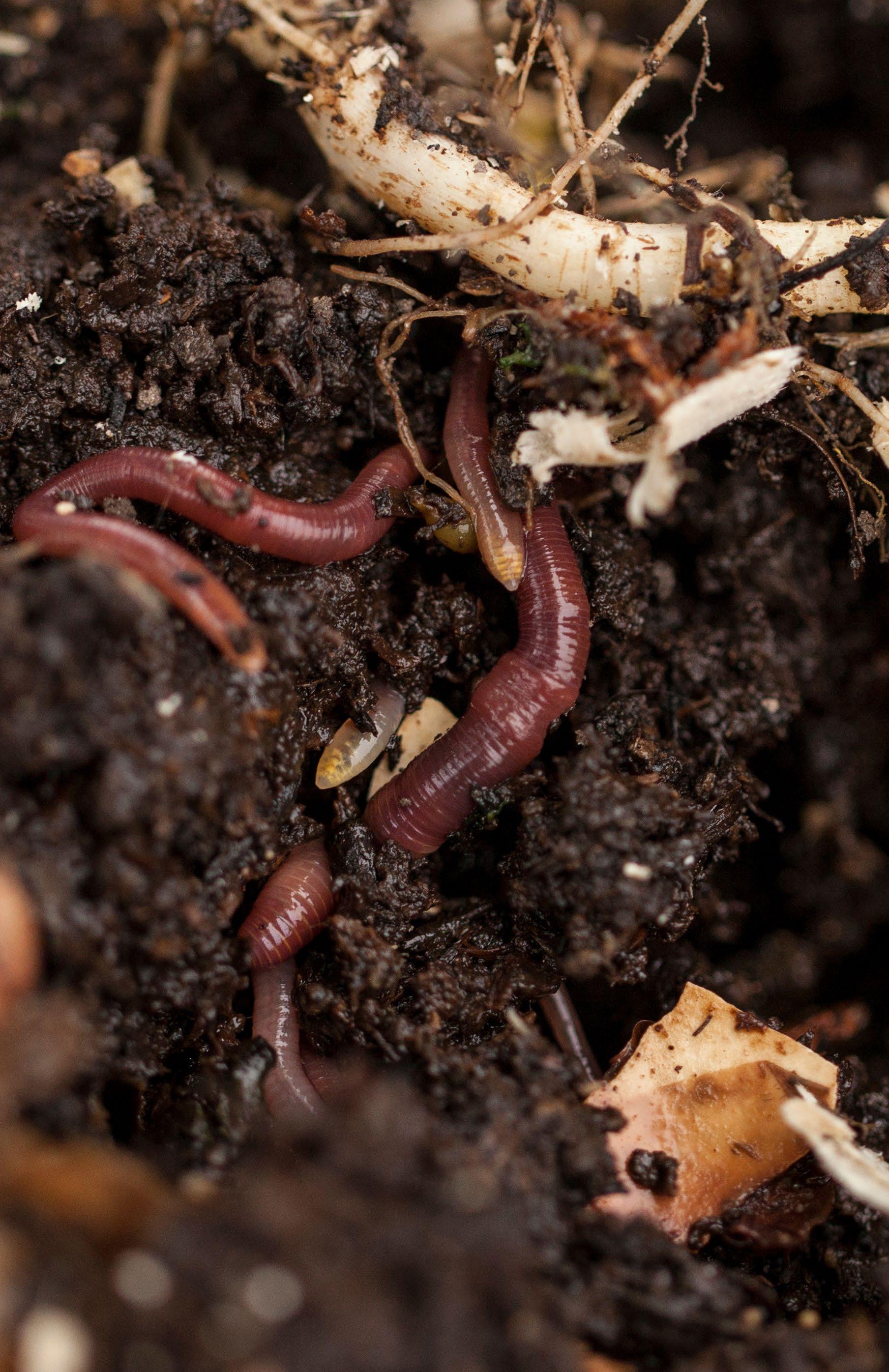
Aerated, or turned, composting
This type of composting is suited to large volume composting. Organic waste is piled into long rows that are aerated periodically, either manually or mechanically. The pile height is 1.2 to 2.4 metres high and 4.3 to 4.9 metres long. These dimensions allow heat generation and maintenance along with oxygen flow to the core. In warm, arid climates these rows may need to be covered to stop them drying out. This approach works in cold climates. Leachate is created and needs to be collected and managed to avoid groundwater contamination.
Aerated static pile composting
Composting takes three to six months. It is not suitable for composting animal by products or grease from the food processing industry. Organic waste is mixed in a large pile and layers of loosely piled bulking agents – wood chips, shredded newspaper – are added so air can pass from bottom to top of the pile. Pipes can also be used to deliver air or draw out of the pile.
This is a more passive approach than turned composting and so in cold climates more care is needed to maintain ventilation and temperatures through the whole pile. While this approach takes up less space than turned composting, it does require the purchase, installation and maintenance of blowers, pipes, sensors and fans.
In-vessel composting
This approach is well suited to high volumes and does not take up much space. It can accommodate almost all types of organic waste. Organic material is fed into a drum, silo, concrete-lined trench, or similar equipment. This allows good control of the temperature, moisture and airflow. Mechanical turning or mixing ensure the material is aerated and the composting process is complete in a few weeks. The material then must be left for a few more weeks or months while microbial activity balances and the pile cools down.
This approach can be scaled from small units the size of a kitchen to something much larger. With insulation, this approach works in very cold climates. Little odour or leachate is created. While this uses less land and manual labour, it is more expensive and may require technical expertise.
8 3
Required characteristics for composting
To achieve the populations of these micro-organisms required to transform organic waste in to stabilized organic matter, they must:
■ Not include dangerous elements
■ Have a structure allowing good air circulation
■ Processes that allow the control of relative humidity
■ Engineering and infrastructure controls that allow the maintenance of the necessary environment that facilitates the mixing process with the organic material.
Successful composting requires7:
■ A balanced mix of ‘green’ organic materials (material with high levels of nitrogen - food waste, manure grass etc.) and ‘brown’ organic material (material with little nitrogen - dry leaves, wood chip etc.).
■ Controlled particle size to allow an optimum temperature to be achieved and a free flow of air through the pile.
■ Moisture is needed to allow nutrients to reach the micro-organisms that live in the pile.
■ Oxygen needs to flow through the pile, although without drying it out. This can be achieved by putting the pile on pipes, including bulking agents such as wood chips or shredded paper. Good oxygen flow speeds up the decomposition.
■ If the temperature does not reach at least 60 degrees centigrade, then aerobic composting will not happen, and anaerobic conditions (rotting) takes place. The microorganisms need a certain temperature for optimal activity.
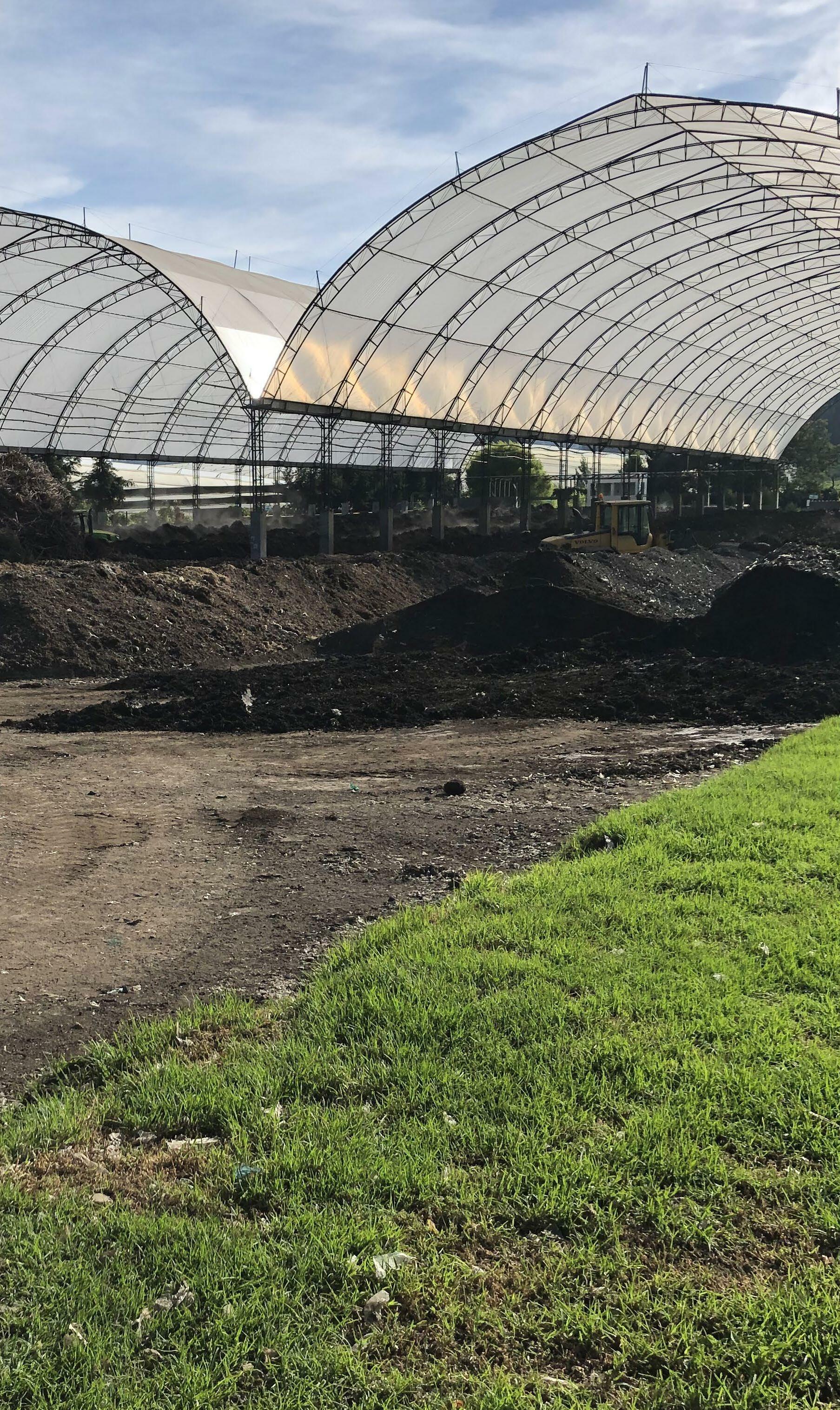
■ Ensuring non-hazardous waste is achieved by analysis of the material characteristics and making sure the processes to avoid the inclusion of hazardous waste are robust, including material balances and the evaluation of process flow lines. Hazardous waste may include material that is corrosive, reactive, explosive, toxic, flammable, infectious or radioactive. Each country issues the respective regulations that establish the permitted limits and the guidelines for the acceptance of the waste as non-hazardous.
If the mixture has a good structure of the mixture, then adequate air circulation is possible, and the process can run well allowing the growth of the population of micro-organisms necessary in each of the stages:
■ Initial conformation
■ Thermophilic phase
■ Maturation stage.
7 www.epa.gov. Sustainable food management. Types of composting and understand the process.
9 3
The following table below shows some reference ranges for the process at each stage.

The Bank of England used to compost banknotes before its transition to using polymer substrate. In 2013 it carried out a Life Cycle Analysis of paper and polymer notes8 which looked at the impact of composting, see section 2.11.8 on page 26 of the Bank’s report.
Anaerobic digestion
Anaerobic digestion is a process to eradicate micro-organisms by raising the temperature and pressure in relation to ambient pressure and/or temperature. The result is a homogeneous, sterile, biogenic material which can then be used for other purposes.

The digestion process begins with bacterial hydrolysis of the input materials, which breaks down insoluble organic polymers such as carbohydrates and make them available for other bacteria. Acidogenic bacteria then convert the sugars and amino acids into carbon dioxide, hydrogen, ammonia, and organic acids. Acetogenic bacteria then convert these resulting organic acids into acetic acid, along with additional ammonia, hydrogen, and carbon dioxide. Finally, methanogens convert these products to methane and carbon dioxide9 .
Anaerobic digestion is widely used as a source of renewable energy. The process produces a biogas, consisting of methane, carbon dioxide, and traces of other ‘contaminant’ gases. This biogas can be used directly as fuel, in combined heat and power gas engines or upgraded to natural gas-quality biomethane. The nutrient-rich digestate also produced can be used as fertilizer.
10 3
Source: Farmer’s Composting Manual - FAO -, Santiago de Chile 2013
8
9
LCA of Paper and Polymer Bank Notes (bankofengland.co.uk)
What is Anaerobic Digestion? - American Biogas Council
3.9. Technical material: the waste creates new materials
Using banknotes to make paper (Egypt10)
The Central Bank of Egypt (CBE) has carried out research into removing ink from banknotes to allow the cotton fibre to be reused in making good quality paper such as stationery, office products, art paper and printed circuit board substrate. The CBE identified shredded banknote paper as a good source of cellulose fibre. The results of the research were that it could produce paper pulp and that the resulting sludge could be burnt for energy or used in other productive ways.
Currently the CBE creates briquettes of shredded unfit banknotes 15cm x 8.75cm x 6cm and runs these in special furnaces on its premises. The research was intended to explore recycling the waste and to determine if sludge created in that process could be used as fertiliser, burnt to create energy to power the paper mill or whether it had to go to landfill. If burnt, the CBE wanted to know if the ash would have to go to landfill or if it could be used for cement, concrete or brick manufacture.
Egyptian banknote paper is 75% cotton, 25% linen and includes coloured fibres. The intaglio inks used have colour pigments blended with oil extenders. The inks also include oleic acid, 98% purity, NaOH, HCL, hydrogen peroxide, ethylene diamine tetra acetic acid (EDTA), calcium chloride and sodium silicate.
The process to remove the inks had six stages between to turn waste currency paper into clean paper pulp:
■ Soaking in NaOH, NA2SiOz
■ Screening through 74 micron meshes to remove ink particles greater than 74 microns
■ Pulping at high temperatures
■ Screening through 0.9 micron meshes to remove nylon
■ Flotation to separate large ink particles and small pieces of nylon
■ Bleaching to increase brightness.
The aim of the process was to release contaminants from cellulose fibres and separate them from the pulp slurry.
The optimum soaking conditions proved to be a 10% paper consistency and to soak it for four hours at 80 degrees centigrade. This created a yield of good paper pulp of 53.37% with a brightness of 65.03%.
The resulting de-inking sludge could be burnt for energy. It consisted of carbon black, other ink components, organic polymer material, nylon, filler, coating components and rejected short fibres. CBE carried out an FITR spectra of the sludge. The de-inked sludge has half the ash of the sludge ink ash.
The sludge and nylon were found to have a high calorific value, making it suitable for energy recovery through incineration or use in cement kilns or thermal power plants. The sludge ash had a calorific value of 25.845 MJ/kg and the nylon ash 29.31 MJ/kg. These results make them economically viable.
The research identified that pyrolysis and gasification could be used to convert the sludge into other valuable products, but did not look at this further,
The key parameters determining whether the sludge could be incinerated were its composition, calorific value, physical and chemical properties. It contained silica, aluminium, calcium, titanium and iron oxide. It was found that it was suitable for use in cement, ceramics and glass industries.
Once incinerated, the sludge ink ash was found to be over 33.5% and so cannot self-sustain combustion.
Steam autoclaving
The steam autoclaving process is designed to break down the structure of organic material. The high-pressure steam and tumbling action provide the environment necessary to produce a fibrous material from the organic components. The result is a homogeneous, sterile, biogenic material which can then be used for other purposes.
Landqart has worked with Hughes Energy, which has developed the autoclave technology on an industrial scale to take solid unsorted municipal waste and, using the Wilson System®, to turn it into green energy. The output from the organic material is a sanitised fibre, Wilson Fibre®, that can be used as a feedstock for biochar production, gasification, pyrolysis, anaerobic digestion, and to create high value biochemicals and biofuels. The process is completely enclosed so no water or toxins can escape into the ground or environment.
The autoclave hydrolyses the cotton, creating hydrolysed cellulose.
Scientists from the US Department of Agriculture (USDA) reviewed the results. Their conclusion was that if the level of hydrolysis is controlled, it is possible that other products could be produced such as cellulose acetate, which is used in the textile and personal hygiene industry.
10 https://doi.org/10.1080/01496395.2017.1395887. Recycling of shredded currency waste of Egyptian Central Bank for making good-quality papers. Separation Science and Technology. November 2017. Ahmed Yehia, Khaled E Yassin & Alaa Eid.
11 3
Other
Asphalt
The Scientific and Technological Research Council of Türkiye carried out a joint study with the Central Bank of the Republic of Türkiye (CBRT) to find the best method for disposal of unfit banknotes. Based on this study, CBRT provides briquettes to local companies at eight of its 23 sites to be used as a recycling material for the production of asphalt. In addition, separate research published in 2022 investigated the use of two modifiers, cotton straw powder and cotton straw cellulose, added to a matrix asphalt to improve the performance of heavy traffic asphalt pavements11 .
The research found that they improved the tenacity, temperature sensitivity and rheological properties of the asphalt. The increase of asphaltene content and the decrease of aromatic content was due to the good oil absorption of cotton straw cellulose. The high temperature performance improved but the low temperature performance did not improve significantly.
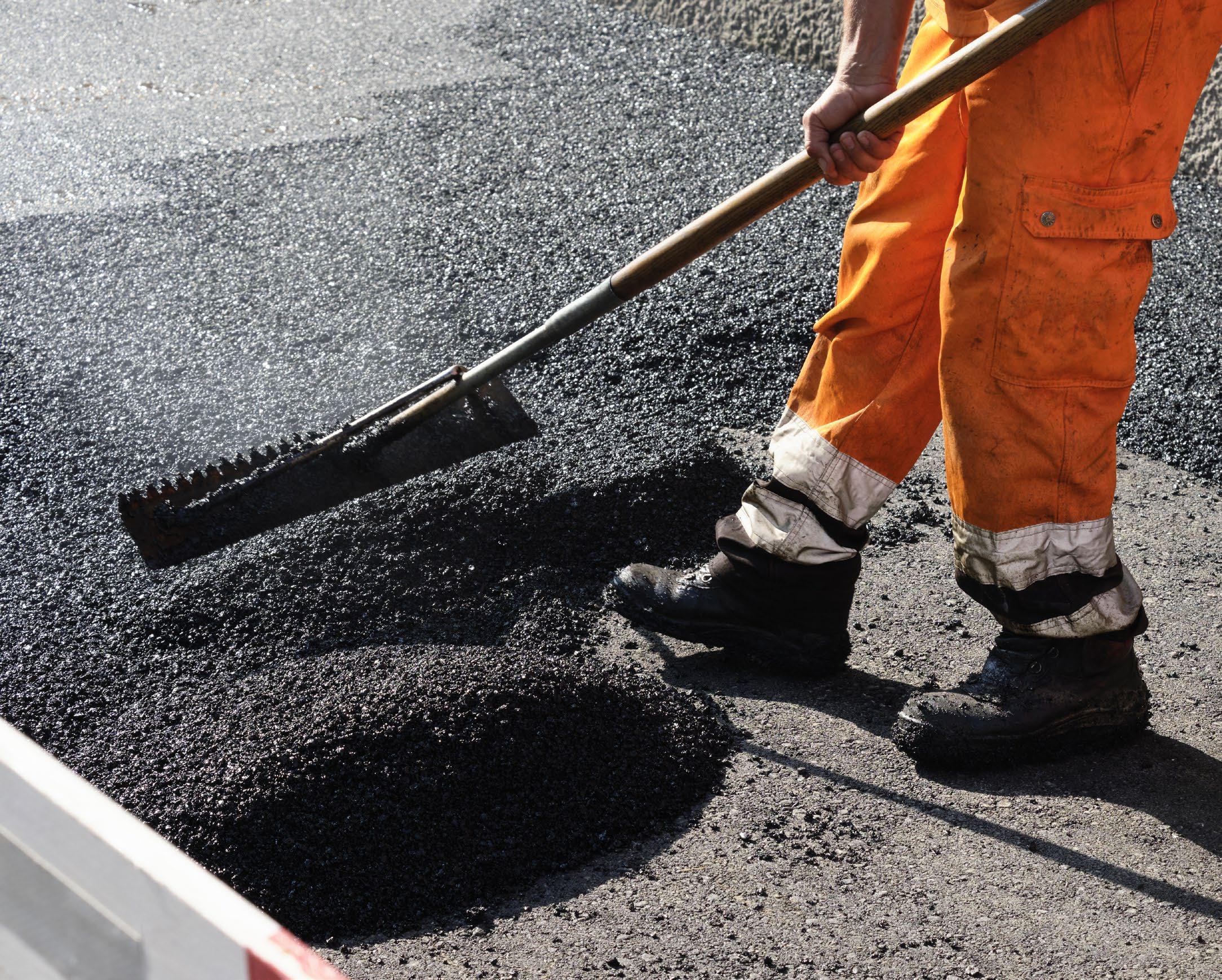
Brick material
A 2007 paper by Halil Murat Algin and Paki Turgut investigates ‘Cotton and limestone powder waste as brick material’12. This paper looked at using cotton waste (CW) and limestone powder waste (LPW) in combination to produce low cost and lightweight composite building materials. It believes its work can be easily applied in current brick plants to create economically competitive sturdy, lighter weight composites for use in walls, wooden board substitutes, as alternatives to concrete blocks, ceiling panels, sound barrier panels etc.
The results showed the new products were not brittle, had high energy absorption capacity, were dramatically lighter (about 60%) and had smoother surfaces than current concrete bricks. The material behaves similarly to autoclaved aerated concrete. Concrete with 30% replacement levels of CW satisfied the compression and flexural strength values required for BS6073 building materials used in structural applications.
Reinforcement for Portland cement concrete
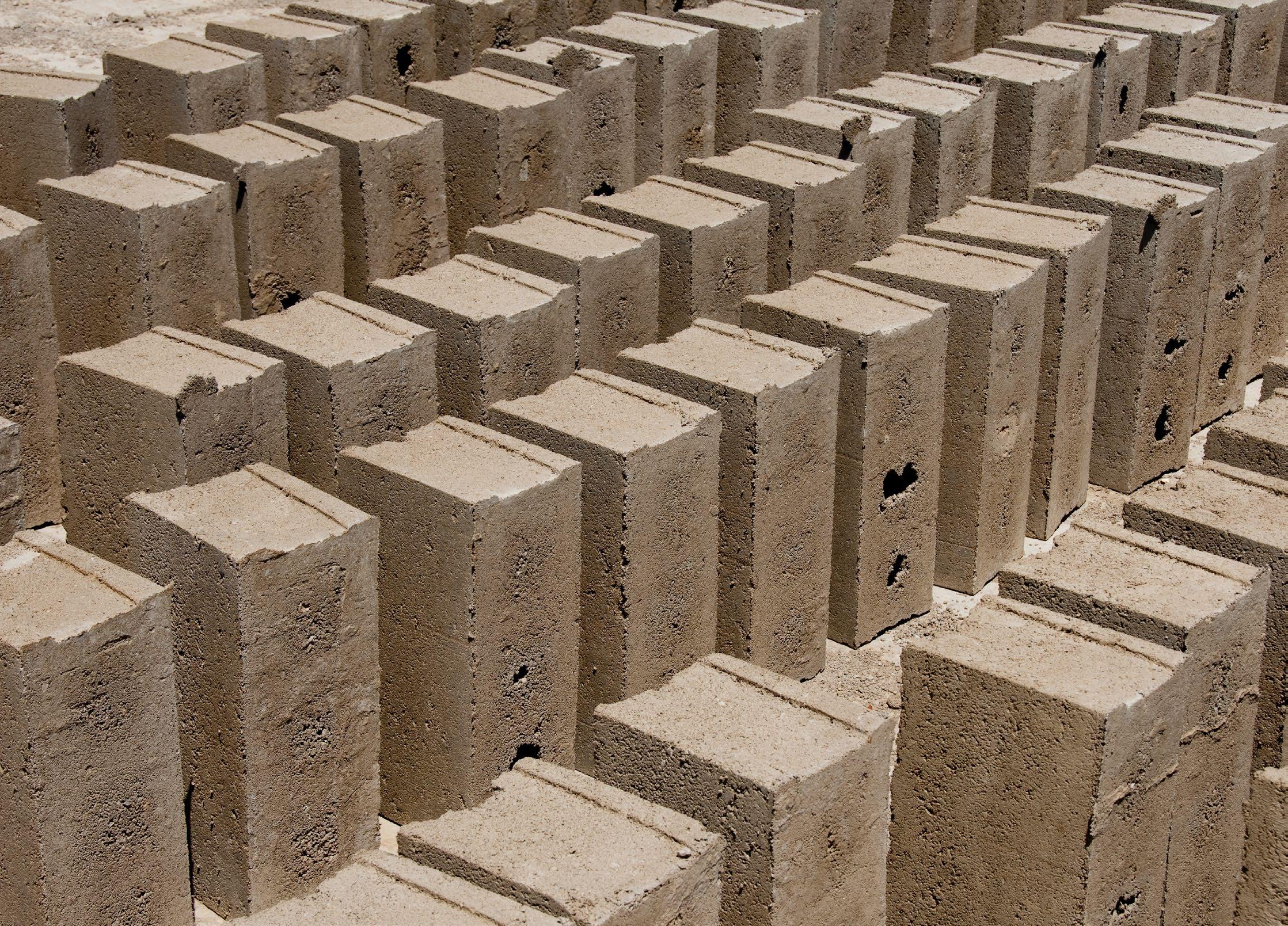
One of the limitations of concrete is its lack of tensile properties. A 2019 paper investigated whether the addition of cotton fibre could address this limitation13. The research found an increase in tensile strength and ductility of the concrete and a less brittle failure mode. The conclusion was that the use of cellulose cotton fibres could offer a more economic and sustainable way to reinforce conventional concrete.
11 www.iopscience.iop.org. Study on pavement performance of cotton straw cellulose modified asphalt. 28 February 2022. Zhenxia Li et al 2022
12 www.turgutpaki.weebly.com. ScienceDirect – Construction and Building Materials 22 (2008) 1074 – 1080. 13 trid.trb.org. Transportation Research Board. ‘Waste cotton fiber derivatives as reinforcements for Portland Cement Concrete’.
12 3 3.10.
4. Who is doing what
We present case studies from the European Central Bank (ECB), Federal Reserve in the US, Colombia (BioBanknote) and Pakistan. We also summarise the results of a survey carried out for this report of 47 central banks about how they dispose of unfit cotton banknotes.
4.1. Survey results
The survey responses came from a good geographical mix with central banks of all sizes.
Asia CIS Africa Caribbean, Central America, Europe Middle East 9 3 5 18 18 2
The survey was conducted on the basis of the results being anonymous unless permission was given for details to be shared. 11 of the European countries were not Eurosystem members. No ‘polymer only’ countries were surveyed.
General sustainability
Based on this survey it appears that sustainability is on the agenda of central banks, 33% having a policy, but this has not necessarily flowed down to the issue departments within central banks given that fewer issue a sustainability report, 29%, and life cycle analysis is relatively rare, 13%.
Sustainability is only included by 17% of central banks in their procurement processes and when the detailed responses are read, even fewer central banks score suppliers as part of their adjudications. It is more usually used in the selection of suppliers to be included in the procurement process.
Most central banks, 83%, now allow recirculation by commercial banks.
The number of central banks that have cotton and other substrates circulating, even if just one denomination, is now high.
Solar figure includes central banks that just have a few panels as well as only two central banks who use 100% renewable energy.
Disposal of shredded unfit cotton banknote
Landfill remains widely used although it is almost matched by waste to energy by incineration. There is some ambiguity about what happens given the number of central banks who sell their waste for ‘recycling’ without clarity on how they are used. Given the number of examples of banknotes being used for construction materials, it is likely that these banknotes are also avoiding landfill.
With 30% investigating alternative options for disposal, it appears there is a will and wish to do things differently.
Survey results for the use of banknote waste other than burning
■ Briquette sold to paper mills and other scrap collectors
■ The shredded banknotes are sent for recycling
■ Briquettes are collected by local cement manufacturers for fabrication into alternative source.
■ Briquettes are processed for sale. Some is sold to other non-banknote paper mills. A small proportion of the shredded notes are sold as souvenirs.
■ Usage for construction material
■ Burnt in the city’s crematorium.
■ The Bank has a contract agreement with the certified and registered company which correctly and safely disposes of shredded banknotes waste (it is used for construction material).
■ ‘X ‘of our cash centres dispatch their shredding to an authorized company to be used as a recycling material for asphalt production. The remaining cash centres have contracts with different companies that use it as a solid fuel in direct incineration.
■ Incineration with energy recovery, composting and recycling.
Regional differences
■ Waste for energy by incineration is widely used in Europe because of the ECBs requirement that landfill is not used.
■ Asia and Europe are most active on sustainability policies and procurement.
13 4
4.2. Case studies
European Central Bank
In 2012, the European Central Bank (ECB) started collecting environmental data from accredited manufacturers of banknote substrate, components and printers. In 2004 the ECB had carried out a Life Cycle Assessment of banknotes and it used this to inform itself about the data to collect. One element of the data collection was the information on waste generated during the production processes and the different categories of waste disposal methods.
In 2015, the ECB included unfit banknote waste disposal from cash centres in its data collection. It found that how the unfit banknote waste was disposed of in different methods depended on the circumstances of the countries of the different euro area National Central Banks (NCBs) and their issue department.
The European Union (EU) policies relating to the environment have played a part in driving the ECBs interest and activity in the area. The EU Waste Directive14[1] was the primary focus, but over the years the EU programmes on a ‘Green Deal’ and a ‘Toxic Free Environment’ were also drivers. With this in mind, the ECB decided to take steps to stop Eurosystem banknote waste being disposed of in landfill.

From 2023 onwards, NCBs are expected to not dispose of unfit banknotes in landfill. In reality the situation is more complicated than that. A number of countries have geographic challenges, the most obvious example being where countries have many island communities. Shipping waste to appropriate disposal facilities can conceivably have a greater environmental impact than using local landfill. Recognising such a reality, the NCBs need to justify its limited use and explain their future plans.
The terminology the ECB uses around the burning of banknotes differentiates between burning with and without energy recovery. Without energy recovery is defined as ‘combustion’ and burning with energy recovery as ‘incineration’.
In the context of its environmental impact studies on the end of life stage (waste disposal), one ECB area of interest is in the topic of recycling and the definitions connected with it. The ECB is endeavouring to identify environmentally friendly alternative waste disposal methods, especially recycling. Virtually all euro area NCBs are now using waste to energy by incineration to dispose of their banknotes.
14 [1] Waste Framework Directive (2008/98/EC) — European Environment Agency (europa.eu)
14 4
US Federal Reserve: FedCash® Services
The US has 28 cash offices which dispose of shredded unfit cotton banknote waste. The volumes involved are large, although they vary across the individual offices. Each office has autonomy about how they dispose of the waste. FedCash shares information across the offices about what different offices are doing.
After three weeks the liquid is filtered to remove any plastics in the pools. From the banknote waste security threads, applied foils15 and security fibres16 have plastic content. For the other waste, eg. food waste, there may be plastic wrapping material. Regulations in Colombia allow 1% of the content to be plastic but, the filter reduces this to 0.1%.
Volume in tonnes.
Colombia: BioBanknote®
A Colombian company, BioBanknote, has developed a composting solution for paper banknotes. It has worked closely with the Central Bank of Colombia and is conducting trials in 2023 with the central banks of Argentina and Peru. It has also worked with two other central banks in Latin America. Shredded banknote paper is added to pools of water along with mixed organic materials such as food leftovers, grass cuttings and plant waste. These pools are large, 90m long. The mixture progresses through three pools over three weeks, allowing the material to decompose and form a compost. Enzymes and microorganisms are used to control the gas emissions that occur.
The resulting mixture meets Colombia’s high regulatory requirements to the extent that it can be used as compost to grow trees and for growing food. In Colombia’s case the central bank prefers to use it to grow trees as part of its goal of being carbon neutral in 2023. The compost, called Biofort in Colombia, is used for germination, planting and feeding new trees. About 300g of material are added to each plant. The central bank is looking to plant 30,000 trees.
Colombia issues about 1,100 tonnes of banknotes each year and needs to destroy about 500 tonnes of unfit banknotes. The central bank has six sites where banknotes are shredded. In Bogota, where over half of the total waste is created, the central bank pays for the waste to be composted, including the cost of delivering it to the firm. The other sites used the shredded banknotes to make cement. The central bank is very satisfied with the composting approach and is looking to be more active on sustainability.
The composting plant that processes the central bank’s banknotes produces about 15,000 tonnes of compost a year from all sources. For countries that produce fewer notes there is an option to use a ‘Bioreacter’, a smaller unit and simpler self-contained unit about the size of a 20-foot container processing batches of about 100kg of material.
BioBanknote make the point that before implementation of their system it will be necessary to carry out laboratory tests and field trials both to be confident that it meets local statutory requirements and to establish the optimal conditions of the mixture. This is because those optimal conditions to achieve the best possible fertiliser will depend both on the characteristics of the waste with which the residues of the banknotes will be mixed.
15 This only applies to laminates (with window), with transfer films from which the carrier film is removed after application.
16 Plastic-free alternatives made from paper are available.
15 4
2018 2019 2020 2021
2017
4,994 5,287 5,656 2,242 1,460
route Percentage Insulation and road surfaces 15% Eco-friendly power generation 42% Compost for potting soil and fertiliser 42%
Only two offices still send banknote waste to landfill but 98% of waste is disposed of in different ways. Disposal
BioBanknote Mulch
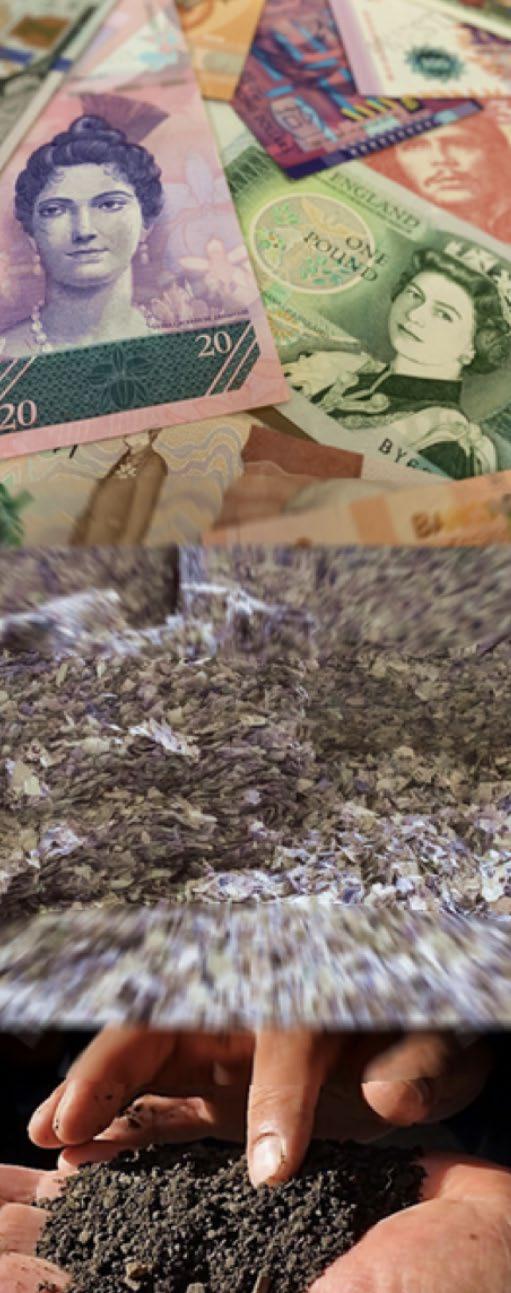
BioBanknote has invented a product specifically to help newly planted trees thrive. Although still based on composting, this product would work well in countries which do not have the infrastructure needed for food grade compost production.
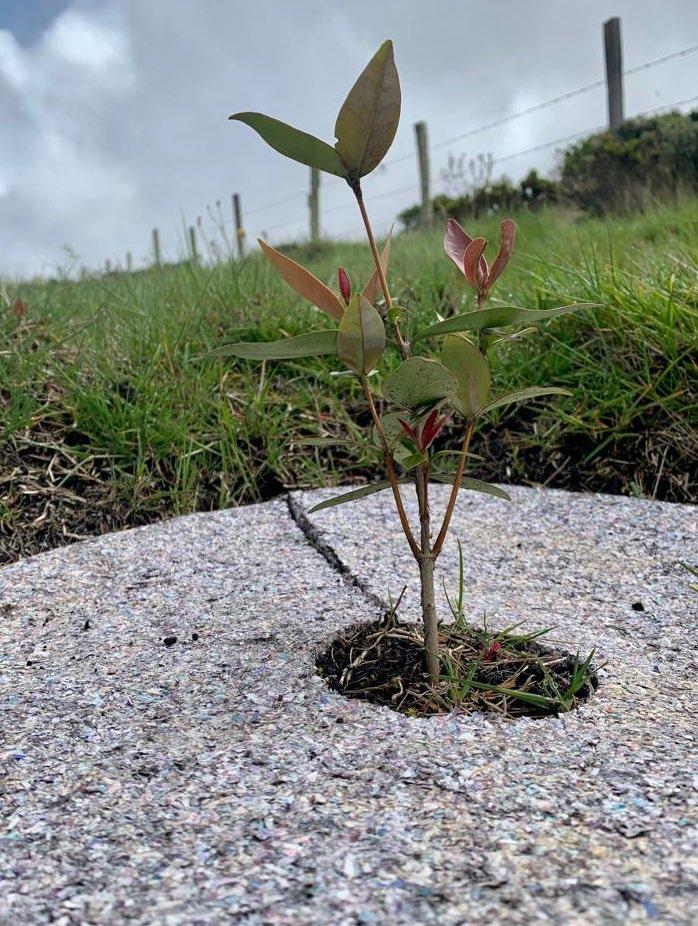


The product, called Biobank Mulch, is a circular flat ‘donut’ designed to go around the base of a newly planted sapling. It suppresses weeds, provides protection against humidity and contains nutrients to see the tree through its first two years of life. Biobank Mulch improves soil quality because it allows useful fungus, bacteria and insects to thrive. While it is relatively easy to plant new trees, maintaining them and allowing them to thrive is harder. This offers a solution.
The first step in introducing this type of composting is a laboratory characterisation analysis of the banknotes in circulation and an assessment of the results against the regulatory requirements of the country. The laboratory analysis must also establish the biodegradability of the material. Once the banknotes meet the regulations, an assessment of production options can take place and a trial can be organised.
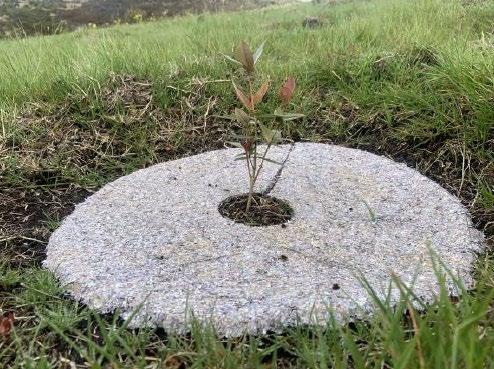
16 4
Burning
Research carried out into the burning of banknote briquettes for the State Bank of Pakistan found that the gross calorific value of shredded banknote briquettes is 3890 kcal/kg. This value is higher than that of lignite coal (lowest rank of coal due to its relatively low heat content) and comparable to other biomass fuels like wheat straw, rice straw, maize straw and sugarcane bagasse. The ignition time of these briquettes is a few seconds, and the flames take a little while to catch. The highly volatile nature of this fuel is responsible for a good flame height. Higher energy density suggests that these briquettes tend to burn for a longer period (burning time of 1 kg of this fuel is 1 hour and 45 minutes).
Emission analysis shows that only the NOx level is in the safe range. However, the amount of SO2 (12500 mg/NM3) is greater than the limits (1700 mg/NM3) set by NEQS (National Environmental Quality Standards). Moreover, the sulphur content of the sample briquette was found to be 0.42%. This value is higher than the limits set by the Austrian and German national standards for fuel pellets and briquettes (sulphur content ≤ 0.08%).” As a result, the State Bank decided to investigate composting as an alternative.
Composting
In 2021 the Pakistan Security Printing Corporation (PSPC) started a project to explore how to dispose of 1-1.5 tonnes of wastepaper per day through composting. PSPC produces four billion banknotes per year.
The project focused on composting a mixture of cow manure, a nitrogen rich organic material, with banknote waste, a carbon rich material. Key concerns were whether the resulting compost would be good quality, what would happen to chemicals in a banknote, and would there be wastewater problems?
The three stages of composting were:
■ Low temperature. Mesophilic organisms synthesise proteins at temperatures between 20-45 degrees centigrade.
■ High temperature. High temperatures kill ‘bad’ bacteria, ensuring the compost does not contaminate other materials. The compost pile needs to reach 60 degrees centigrade.
■ Stabilisation phase. In this phase the colour of the pile changes to brown or black and it loses its odour.
Manure and cotton were mixed into piles. They needed to be turned to ensure a good oxygen flow. The project explored the ratio of manure to cotton studying three mixes, 50/50, 60/40, 70/30. The project also included using other organic material.

The ratio of carbon (cotton) to nitrogen (manure), along with the oxygen flow, were the key controls and affected methane emissions. Temperature, acidity and the physical conditions had to be managed to get consistent and good results and were measured every day for each mix. The manure storage conditions were found to be important. The 50/50 mix gave the best results.
The composting took 2-3 months, although initial results were established after two months.
Physical and chemical analysis was conducted, the latter in third party laboratories. The National University measured the biological results. The results were tested on plants and in the laboratory. The compost met the quality compost standards and were found to contain no heavy metals. The cotton was found to have added beneficial nutrients to the manure.
A detailed scientific paper is in preparation by PSPC describing the techniques and application to plants.
PSPC has also trialled disposing of shredded waste of unfit banknotes withdrawn from circulation. Approximately 12.6 tonnes of material need to be disposed of each day. PSPC is confident that its composting approach can be scaled up to accommodate the quantity of material needing disposal, particularly since it has identified ways to automate the turning that oxygenates the piles. It is planning a 3,000 square metre site with seven windrows of material handling two tonnes of manure and two tonnes of banknote material each.
The conclusion of PSPC is that composting reduces CO2e emissions. The aerobic process means oxygen is present, so methaneproducing microbes are not active in composting conditions. Turning the compost heap stops the anaerobic process which produces methane. All the carbon is released when material is burnt but this aerobic composting releases 37-40% of the carbon.
17 4
Pakistan
5. Where to start
5.1. What needs to be understood
To find alternatives to landfill the central bank will need to:
■ Understand national regulations on protecting the environment for the different disposal options.
■ Analyse the banknote composition and the implications for the different disposal routes.
■ Investigate the waste disposal infrastructure and options for different disposal routes.
■ Are there incinerators capable of burning briquettes? They will need to burn to a minimum of 900 degrees centigrade and to have air filters capable of removing impurities.
■ Are there other organisations, eg. cement companies, brick manufacturers, sugar mills etc., who could burn the briquettes?
■ Discuss with waste management companies how they manage similar waste to banknotes.
■ Discuss with the supplier of their shredder equipment its experience and knowledge of this topic.
■ Is composting, whether aerobic or anaerobic, an option for the volumes involved?
■ Are there options to use banknote waste in high value end of life options such as…
■ cotton fibre recovery for paper making
■ asphalt enhancement
■ brickmaking or concrete improvement
■ insulation
■ furniture
The goal is to find a disposal route consistent with the volume of waste produced by the central bank that is as high up the hierarchy of disposal options as possible. Clearly, the circumstances of each central bank will be different.
If help is needed exploring options, companies that make destruction equipment, paper makers and banknote printers and companies such as BioBanknote are available to assist.
This topic is discussed at international conferences such as the High Security Printing conferences and this offers a further opportunity to share experience and explore options.

18 5
ANNEX
6.1. Colombia: BioBanknote
Stages of the composting process for banknotes
The composting process with waste of banknotes received from the Central Bank of Colombia is developed by fulfilling the following stages, considering the technology used in the composting plant:
2. Shredding and preparation of the material in particles of size from 3 to 5 mm.
3. Collection for unloading and feeding from the storage hopper to the transport container.
4. Safe transportation of the material and unloading at the composting plant.
5. Mixing with other materials through the formation of composting piles, periodic injection of air the application of water, if necessary, and the periodic application of beneficial / efficient biology.
6. Automated monitoring of the process, periodic turnings, maturation of the process piles, sieving, laboratory analysis and packaging. The process developed from the unloading stage at the composting plant is carried out as follows.
Once the banknote waste is discharged, it is mixed with other materials in the pre-established proportion during the experimentation phases, taking into account the objective product and the characterization of the materials available for the mixture, forming a pre-composting batch which is arranged in stacks along the aeration lines.
During the process, the emission of gases such as methane, oxygen, carbon dioxide, hydrogen sulphide and ammonia is controlled; in addition, other variables such as pH, conductivity and temperature are measured.
The intensive composting process occurs in the first six weeks, with the biodegradation of 75-80% of the organic matter. In this stage, the thermophilic and mesophilic phases alternate with forced aeration, by feeding up to 4.000 m3 of air per hour, achieving a temperature change which, with the contribution of efficient micro-organisms, allows the reduction of the population of pathogenic microorganisms, the increase in the population of beneficial micro-organisms and the formation of humus chains in the processed material.
Weekly turnings are made in each stack, starting with the displacement from position 6 of the intensive stage to position 1 of the maturation stage, to allow the other stacks to be moved sequentially, in such a way that the stack in position 5 changes to position 6, position 4 changes to 5, position 3 changes to 4, position 2 changes to 3 and position 1 changes to 2. After those movements, position 1 is available to assemble the new batch of pre-ready composting prepared during the week. Likewise, humidity is regulated with the supply by irrigation of the previously conditioned organic amendment to add efficient micro-organisms and supply oxygen by extended aeration with a capacity of 250 m3/hour; performing daily monitoring of the variables described in the previous paragraph.
The maturation stage follows, during which time six weeks, in which two weekly turns per pile are carried out and rainwater is applied to replenish the humidity instead of organic amendment. At this stage, the humidification processes are completed, favouring the formation of humic acids, growth of the population of beneficial micro-organisms, achieving a resulting material that is easier to be assimilated by plants in their physiological processes. In the same way, the monitoring of the previously described variables is fulfilled.
Once the maturation stage is over, the final manufacturing processes continue, including sifting and packaging the material. In the sifting procedure, a sample is taken from the reference lot to evaluate the quality of the compost in its physical, chemical and microbiological variables of interest, determining the beneficial and/ or pathogenic microbiology. According to the results, the final destination of the obtained product is decided. The segregated coarse material is recirculated returning to the process and the fine material is packed.
The final product is a high-quality fertilizer, called BIOFORT, which is approved by government entities and is also used for planting trees for reforestation purposes and offsetting the carbon footprint generated by the cash cycle in Colombia.
19 6 6.
6.2. Infrastructure and other material requirements for composting banknote waste
For the composting of banknote waste in ‘The Colombian Model’, the following infrastructure is available at the organic fertilizer preparation plant: Control Ambiental de Colombia:
a. Covered material storage area with a concrete floor.
b. Mixing area with concrete floor and leachate drainage.
c. Intensive process area with drainage system and leachate storage tank, with forced aeration to enable them as a liquid amendment by applying oxygen through extended aeration and efficient micro-organisms adding. The tank is connected to a controlled irrigation system. This area is protected from the rain and has a concrete floor.
d. Maturation area, with concrete floor and cover to protect it from the rain.
e. A suitable sieve for the required quality of the final product.
f. A packaging line suitable for the volume of compost obtained.
g. Process control equipment and third-party laboratories for quality control.
The size of the areas, the characteristics of the equipment and the engineering controls have been designed and established for the volume of material received from the bank in Bogota, currently around 600 tonnes of banknote waste per year.
For the composting process carried out at the plant in Colombia, there are other input materials for mixing, such as pruning waste, organic food residues, organic waste from food processing companies and similar, controlling in all cases the carbon/nitrogen ratio, which is maintained between 25 and 30, in accordance with the requirements of the residues of the banknotes to be processed. According to the quality of the available materials and the product to be obtained, the proportion of banknote waste in all the material to be processed is adjusted.
Banknote composting and the environment
The composting model developed in Colombia has proven to be a more favourable alternative to the environment if compared to the systems previously used: disposal in landfills or incineration, which clearly had a significant impact on the environment, due to the high levels of pollution they generated.
The composting carried out at the composting plant, located on the outskirts of the capital city, can be described as a safe and sustainable solution for which measurement protocols are met during the intensive and maturation processes, as well as thanks to the physical, chemical and microbiological analyses to control the final product obtained. Additionally, the levels of some parameters are controlled: methane gas must be below 1% by volume, hydrogen sulphide must be kept below 1 ppm, oxygen cannot be less than 10%, carbon dioxide with a maximum limit of 8%, no traces of ammonia must be found, the conductivity must be less than 3 DS/m and the final pH of the product must be between 7.0 and 8.0 Pt-Co units.
With these levels, the adequate characteristics of a high-quality compost are ensured, low emissions of greenhouse gases and pollutants and little loss of nutrients such as organic carbon, sulphur and nitrogen.
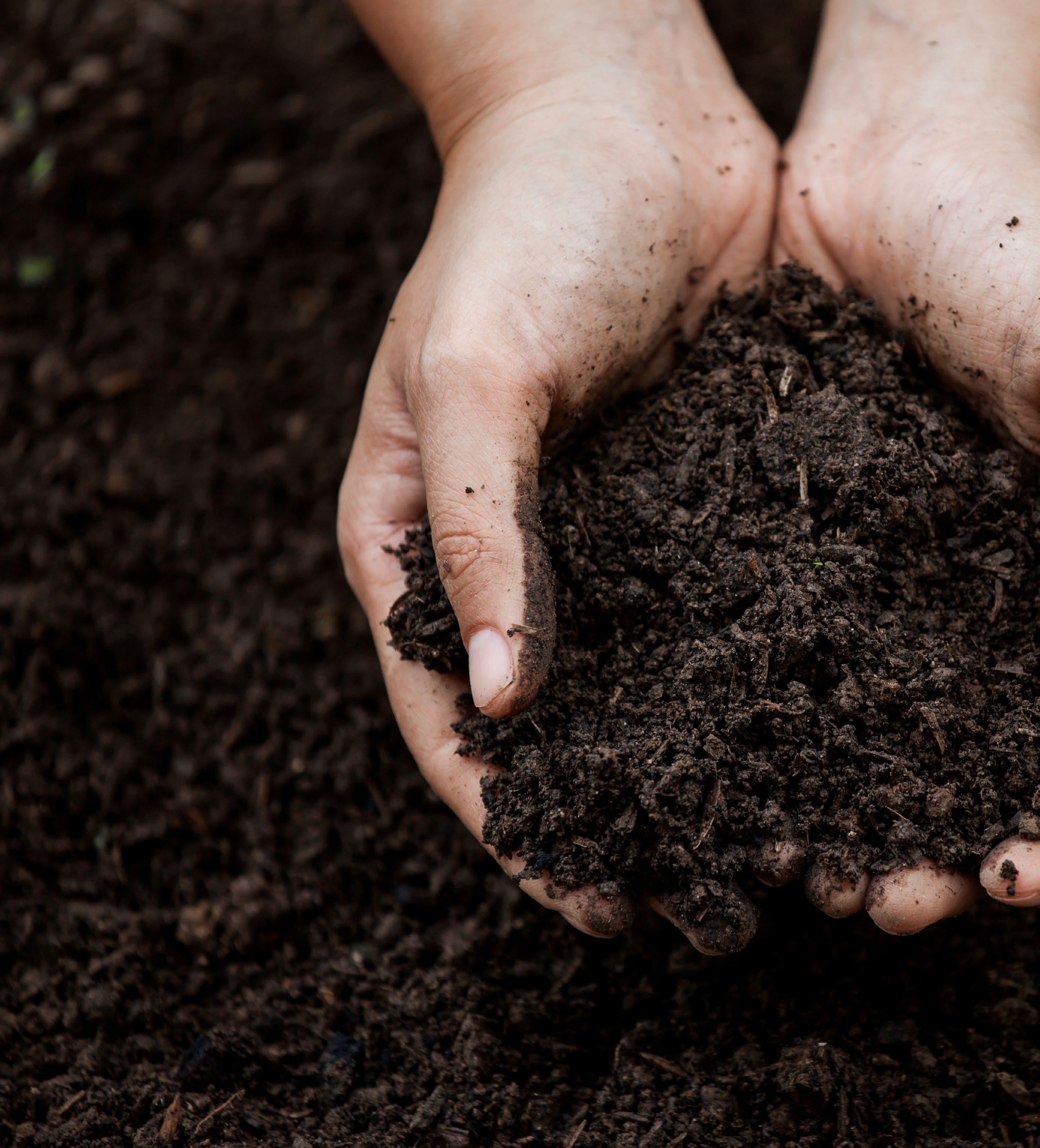
20 6
6.3. Hughes Energy/Landqart
Steam Autoclaving
To understand whether the autoclave process would work for banknotes, Landqart worked with the Biorenewables Development Centre (BDC) in the UK. The BDC does open access scale up R&D to convert plants, microbes and biowaste into high value products. Landqart tasked them with answering three questions:
■ Can a banknote be autoclaved?
■ Evaluate the applicability of the Wilson System®
■ Evaluate the cellulosic material created to see whether it is suitable for local use or sale internationally.
The trials tested regular cotton banknotes.
The trial work:
The initial work ran into problems because there was a post-print varnish protecting the banknotes, so the steam used to raise the temperature did not penetrate the paper. Several trials established that the use of either sulphuric or acetic acid in the process solved this problem.
The conclusions were that:
■ The process can create cellulosic fibre suitable for pelletisation for use in biomass boilers.

■ The fibre can be processed further for conversion to other products.
■ Analysis of the captured condensate showed that it was non-toxic and safe to dispose of without additional measures. They were in line with the standard for biomass pellets. The biomass fuel pellets produced met the standards of BS EN 17225-6 and had a value of 15.5MS/kg, the minimum requirement to qualify being 14.5MS/ kg. This level of calorific value is not revolutionary but works well.

Next steps
The next step is to initiate research into whether the fibre can be used during the production of banknote and security paper, creating a fully circular system. This last research needs to establish whether and what compromises are needed if waste note material is to be used in new banknote paper.
21 6
The Pakistan Security Printing Corporation (PSPC) provided this statement:
Globally, Banknote wastepaper is almost always shredded and incinerated and contributes to pollution. On the other hand, Improper waste management of organic wastes, e.g., municipal solid waste, cattle manure and poultry manure etc. is also contributing to climate crisis, while being detrimental to human health. Being an environmentally conscious organization, PSPC has always been very keen to improve our environment. PSPC have been shredding on average, 1-1.5 tonne/day of wastepaper. As part of State Bank of Pakistan and PSPC’s contribution towards its CSR goals and care for the Environment, the PSPC initiated the Banknote Wastepaper Composting Project back in July 2020. Within three months of its initiation, PSPC concluded that;
■ Printed banknote paper waste resulted into high-quality compost with natural nutrients that are required to replenish the soil, eg. NPK (Nitrogen, Phosphorus and Potassium).
■ Treatment of sunflower seeds with 1% compost (produced from Banknote) increased plant height, number of leaves and root length significantly

■ The Physiochemical Analysis shows that the compost has no adverse effects onto the environment as the amount of heavy metals, Salmonella and Fecal Coliform are within the permissible limits as per international standards for a good quality compost.
■ Composting helps to reduce greenhouse effects by limiting the production of gases like methane. Moreover, composting process generates 0.59 ton lesser CO2 per ton of banknote wastepaper than the burning process. Calculations shows that composting produces only 0.87 Ton of CO2/Ton of Printed Waste as compared to combustion/burning that produces 1.46 tons of CO2/ton of printed wastepaper. Consequently, PSPC has reduced 320 tons of CO2 emissions/annum through this technique
The high-quality compost has a high market demand that is expected to result into a net profit of $50-$70/ton of compost. For PSPC, annual profit would be ranging from $50k-$70k.
22 6
Pakistan








Published by Reconnaissance International Ltd 1B Ground Floor, The Beacon, Beaufront Park, Anick Road, Hexham, Northumberland, UK, NE46 4TU +44 (0) 1932 785 680 info@recon-intl.com reconnaissance.net










































